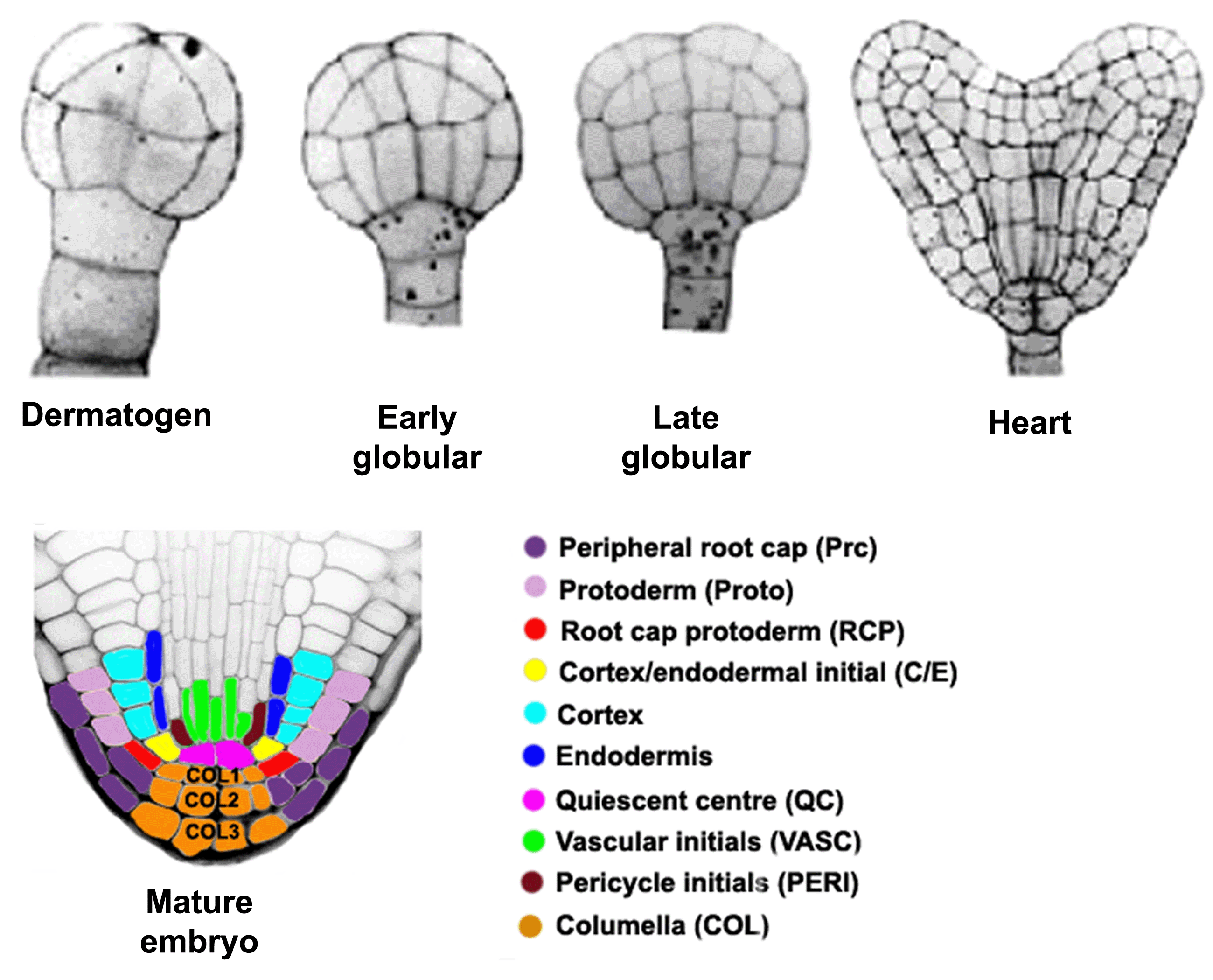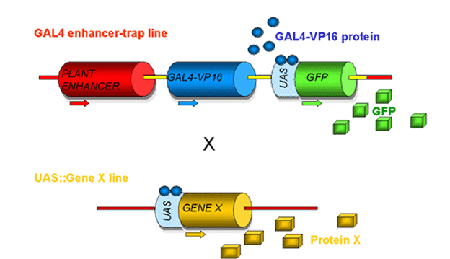|
(a) THE COORDINATION OF CELL DIVISION
AND CELL EXPANSION DURING ARABIDOPSIS EMBRYOGENESIS
(i) Physical and hormonal signals in the
coordination of cell division and expansion during Arabidopsis
embryo development
Background
Cell division is a basic characteristic of all living organisms, and
it plays a key role in generating the cells that will subsequently expand
during plant growth and development. Since plant cells are immobile and
surrounded by rigid cell walls, patterns of cell division and expansion
must be tightly coordinated to ensure that neighbouring parts of the plant
grow at appropriate rates.
We are interested in understanding how cell division events are co-ordinately
regulated and integrated with cell expansion, and the relationship between
cell division, growth and morphogenesis. Specific examples of coordination
between cell division and cell expansion from our current work in the
embryonic root meristem provide an opportunity to examine the nature of
the signals involved, and to identify novel genes required for the coordination
of cell division and cell expansion during Arabidopsis embryogenesis.
The system
The Arabidopsis embryonic root as a model system

The Arabidopsis embryonic root meristem provides
an ideal experimental system. During Arabidopsis embryogenesis,
a precisely coordinated series of cell divisions gives rise to an increasingly
complex structure. The primary root meristem, which can be traced back
to heart stage embryos, has a characteristic pattern of dividing initial
cells surrounding a quiescent centre composed of relatively mitotically
inactive cells. The strikingly simple and relatively invariant anatomy
provides an ideal system for studying cellular interactions.
GAL4 transactivation system for targeted
ectopic expression of genes
Although much has been learned about the relationship between cell
division, growth and morphogenesis by altering cell division events globally
in plants during development, the ability to target the manipulation of
cell division in specific cell types provides an opportunity for examining
local interactions involved in the coordination of cell division and expansion
during development.

We are using a GAL4 transactivation system, developed
for plants by Jim
Haseloff, to target cell cycle genes and expansins to particular regions
of the developing root. This approach allows any gene, the expression
of which has been engineered to be dependent on the presence of a GAL4
transcriptional activator by the inclusion of GAL4 upstream activator
sequences (UAS), to be expressed in particular tissues or cell types when
activated by crossing or transformation into one of a library of GAL4-GFP
enhancer trap lines (Haseloff).

Using this GAL4 transactivation system, we are able to perturb cell
division in specific cell types of the embryonic root meristem via targeted
ectopic expression of cell cycle regulators.
Visualising embryonic root cellular
architecture
In collaboration with Jim
Haseloff, we have developed new staining techniques for high resolution
confocal imaging that allow us to examine individual cells within the
root throughout embryogenesis, and to reconstruct three-dimensional models
of cellular architecture [see Confocal imaging and three-dimensional reconstruction
of plant meristems (further details)].
These techniques provide a unique opportunity for analysing patterns of
cell division and cell expansion during root embryogenesis following cell
cycle perturbation.
Investigating the signals involved
We are investigating the role of the plant hormone auxin by studying specific
examples of coordinated responses to cell cycle perturbation within the
embryonic root meristem, identified from our current work, in a number
of hormone mutant or knockout backgrounds.
(ii) Mapping and characterisation of genes
involved in the coordination of cell division and cell expansion
An alternative approach to understanding how patterns of cell division
and expansion are coordinated during embryogenesis is to isolate mutants
defective in this process. We have identified a number of mutants in an
EMS screen that display aberrant patterns of cell division and/or expansion
in the embryonic root meristem of Arabidopsis, particularly within
the columella root cap region. The goal is to identify novel genes involved
in cell-to-cell signalling during the coordination of cell division and
expansion in the root meristem.
Current funding
Coordination of cell division and cell expansion in the Arabidopsis
root meristem (CONACYT, Mexico)
|

